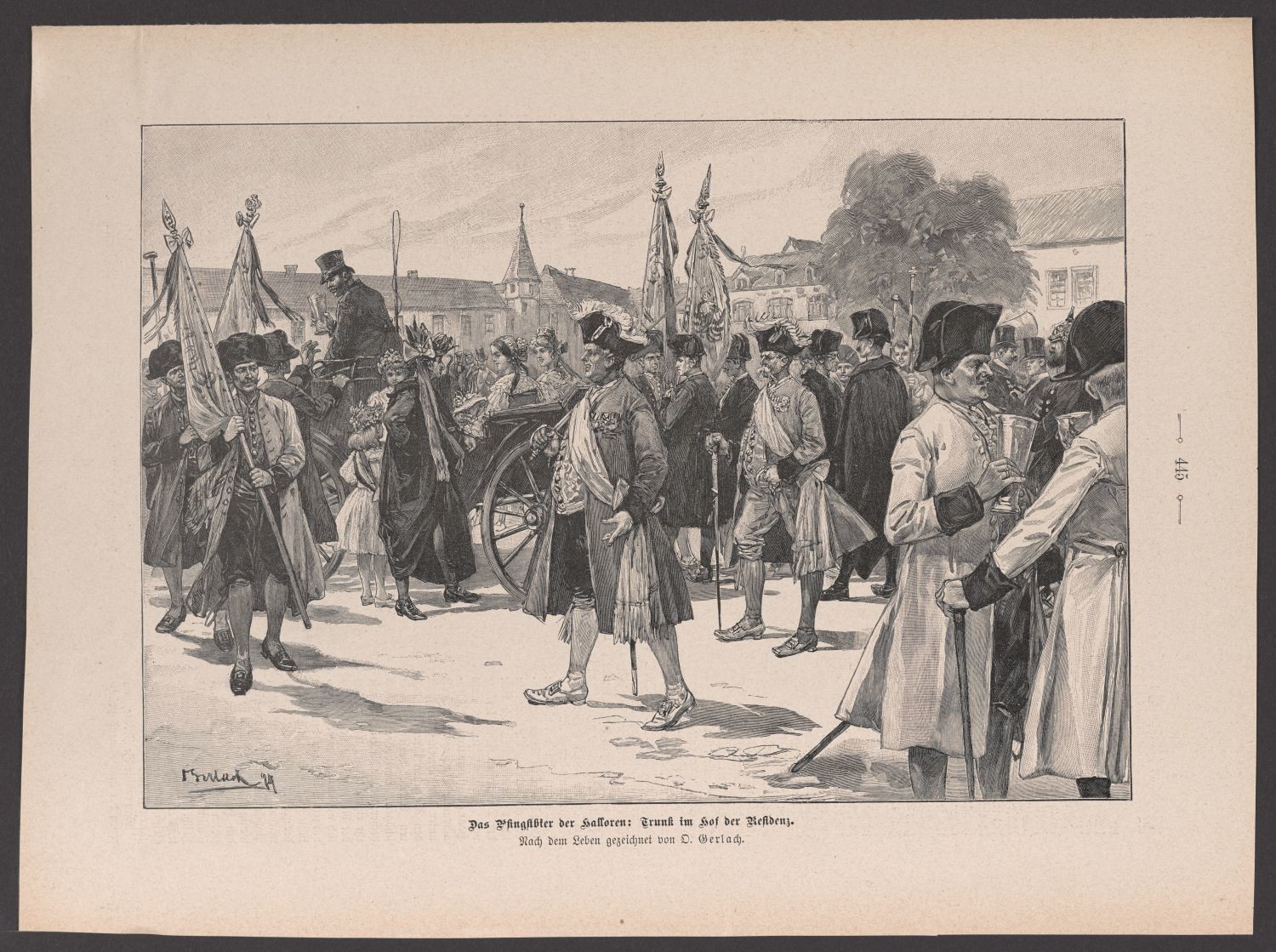Zu sehen ist das Pfingstfest der Halloren. Der traditionelle Umzug fand am 03. Juni 1894 im Hof der Neuen Residenz seinen Anfang. Auf diesem Blatt scheint sich der Umzug von rechts nach links in Bewegung zu setzen. Die Hallorenmädchen in ihren typischen Trachten sitzen in Kutschen. Zwischen den Wagen bzw. ganz links erkennt man die Fahnenträger mit der Fahne Kaiser Wilhelms II. Der Mann mit Degen in der Mitte des Blattes scheint der in der Illustrierten, aus der das Blatt stammt, beschriebene Obersiedemeister Andreas Ebert zu sein. Es könnte sich aber auch um den Hauptmann der Brüderschaft handeln.
Das Blatt entstammt der Illustrierten "Die Gartenlaube".
Signatur: Gerlach 94
Beschriftung: Das Pfingstbier der Halloren: Trunk im Hof der Residenz. Nach dem Leben gezeichnet von O. Gerlach
en

